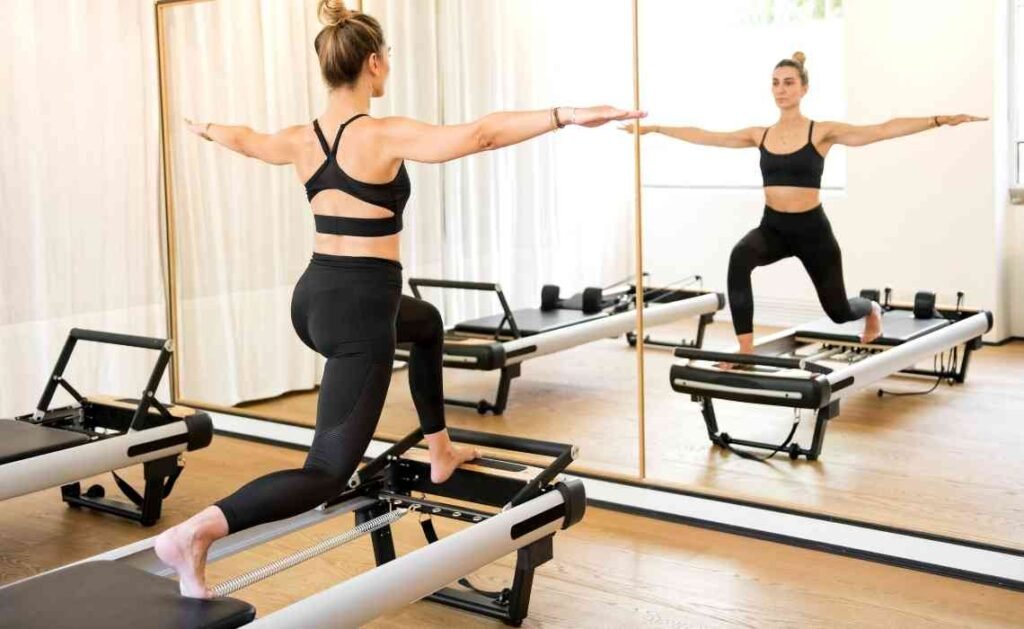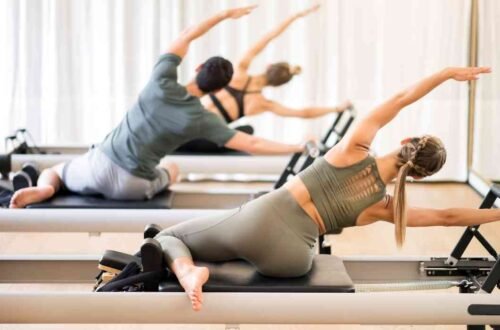
Why is Pilates So Expensive Today?
Pilates is a form of exercise that many people love because it helps improve strength, flexibility, and posture. But when you start looking for classes or private sessions, you might be surprised by the prices. You may wonder, why is Pilates so expensive today? Let us break it down into simple words and clear reasons so you can understand it fully.
1. Pilates Instructors Have Special Training

One of the biggest reasons Pilates is expensive today is because instructors have to go through a lot of training. They are not just fitness trainers; they spend many months and even years learning the techniques properly. They have to study anatomy (which means understanding all the bones and muscles in our body), how injuries happen, and how to help people exercise safely.
A good Pilates teacher often takes a certification course that costs thousands of dollars. After that, they must also practice for hundreds of hours before they are allowed to teach. This investment of time and money means they charge more for their sessions to earn a living.
2. Equipment Costs Are Very High

If you have ever seen a Pilates studio, you will notice large machines like the Reformer, Cadillac, and Wunda Chair. These are special pieces of equipment designed just for Pilates exercises. They are not cheap to buy.
For example, a good-quality Reformer can cost as much as a used car, often $3,000 or more. A full set of Pilates equipment for one studio can cost tens of thousands of dollars. Studios have to pay for these machines, maintain them, and sometimes replace them. All of these costs add up and are reflected in the price of your Pilates sessions.
3. Studios Have High Rental Costs
Pilates classes usually happen in peaceful, well-lit, clean spaces. Studios often rent places in nice areas because they want their clients to feel comfortable and safe. But renting space in a good location is expensive.
In cities or popular towns, rent can be very high every month. On top of that, studios have to pay for electricity, heating, cooling, insurance, and cleaning. These bills must be paid whether there are many clients or not, so part of your class fee goes toward covering these costs.
4. Small Class Sizes Mean Higher Prices
Unlike a crowded gym class where 30 people may join at once, Pilates classes are small. Many times, there are only 5 to 8 people in a session, or sometimes it is even a private one-on-one session.
Smaller classes mean you get more personal attention, and the instructor can correct your posture and movements. But it also means fewer people are paying per hour, so the cost per person is higher. Personalized attention in small classes is one of the things that makes Pilates special but also more costly.
5. Pilates Focuses on Quality, Not Quantity
In Pilates, every movement is done with control, concentration, and precision. It is not about doing hundreds of fast exercises; it is about doing a few exercises really well. This method requires more detailed teaching and careful watching by the instructor.
Because of this focus on quality, you pay for a deeper and more meaningful workout experience. You are not just moving your body; you are learning to move better and build lasting strength.
6. One-on-One Sessions Are Personalized
Many Pilates sessions are private, meaning it is just you and the instructor. This one-on-one training is designed to meet your exact needs. If you have an injury, special goals like building a stronger back, or you want faster results, a private session helps a lot.
Since private time is valuable and requires the full attention of a trained professional, it naturally costs more. Just like seeing a private tutor for school lessons costs more than sitting in a regular classroom.
7. Continuing Education for Instructors
Good Pilates instructors do not stop learning after getting their first certification. They often continue studying new techniques, taking workshops, and staying updated with the latest research in fitness and health.
They pay for these courses themselves to keep improving and offering the best to their students. This ongoing investment means they need to charge more to cover the costs and time they spend on education.
8. Pilates is Both Exercise and Therapy
Pilates is unique because it is not only a workout but also a form of physical therapy. Many people use Pilates to recover from injuries, surgeries, or back pain. It is gentle but powerful.
Because it crosses into the world of therapy, instructors need to be very careful and highly skilled. Teaching in a therapeutic way demands more responsibility, skill, and knowledge, which naturally raises the price.
9. Insurance and Business Expenses
Running a Pilates studio or even teaching private sessions comes with a lot of hidden expenses. Instructors and studio owners have to buy business insurance in case someone gets injured. They also need to pay for licenses, taxes, marketing, websites, booking systems, and sometimes even lawyer fees.
All these little expenses add up. Instructors and studio owners need to cover these costs while still earning enough to live.
10. You Are Paying for Results
Pilates is known to create real changes in the body. People often feel stronger, taller, more flexible, and experience less pain after practicing Pilates for a while. These life-changing results are not easy to get from just any workout.
Because Pilates delivers great benefits that improve your everyday life, many people are willing to pay more for it. You are not just paying for a workout; you are investing in your body and health.
11. Boutique Studios Add to the Experience
Many Pilates studios are boutique-style, meaning they focus on giving a luxurious, customized experience. They may offer beautiful interiors, free water bottles, locker rooms, and sometimes even wellness consultations.
While these extras make the experience very pleasant, they also cost money to provide. Boutique studios usually charge more because they aim to offer something beyond a simple exercise class.
12. Pilates Takes Longer to Learn
Pilates is not something you can master in a week. It requires time to understand and perform the exercises correctly. Beginners need more guidance and correction, which demands more effort from the instructor.
Because it is a detailed and progressive system, teaching Pilates properly means more commitment from both the student and the teacher. This extra attention and slower learning curve contribute to the higher price.
13. Community and Personalized Service
Many people who go to Pilates studios feel a strong sense of community. Studios often know their clients by name, remember their goals, and celebrate their achievements. You are not just another customer; you are a valued member.
This personal touch and sense of belonging are hard to find in big, crowded gyms. Maintaining this level of care and service takes effort, time, and investment from the studio, which is part of the cost you pay.
14. Limited Memberships and Space
Because Pilates studios want to keep class sizes small and attention high, they limit the number of members. Unlike gyms that sell thousands of memberships, Pilates studios only accept a certain number of clients.
With fewer clients, they must charge a bit more to stay in business. You are paying for the guarantee that the studio will not be overcrowded and that you will always get proper attention.
15. Professional Image and Branding
Running a successful Pilates business requires good branding, marketing, and professional appearance. From hiring photographers for studio pictures to designing websites and running advertisements, it costs money to build a trusted brand.
Clients are more willing to trust and pay for a studio that looks professional and polished. However, keeping up with this professional image is not cheap, and the cost is reflected in session prices.
Now you can see why Pilates is so expensive today. It is not just about stretching and strengthening; it is about investing in quality teaching, expensive equipment, high-level care, and a better experience overall. When you pay for Pilates, you are investing in your health, strength, and future well-being. And in many ways, that is priceless.





